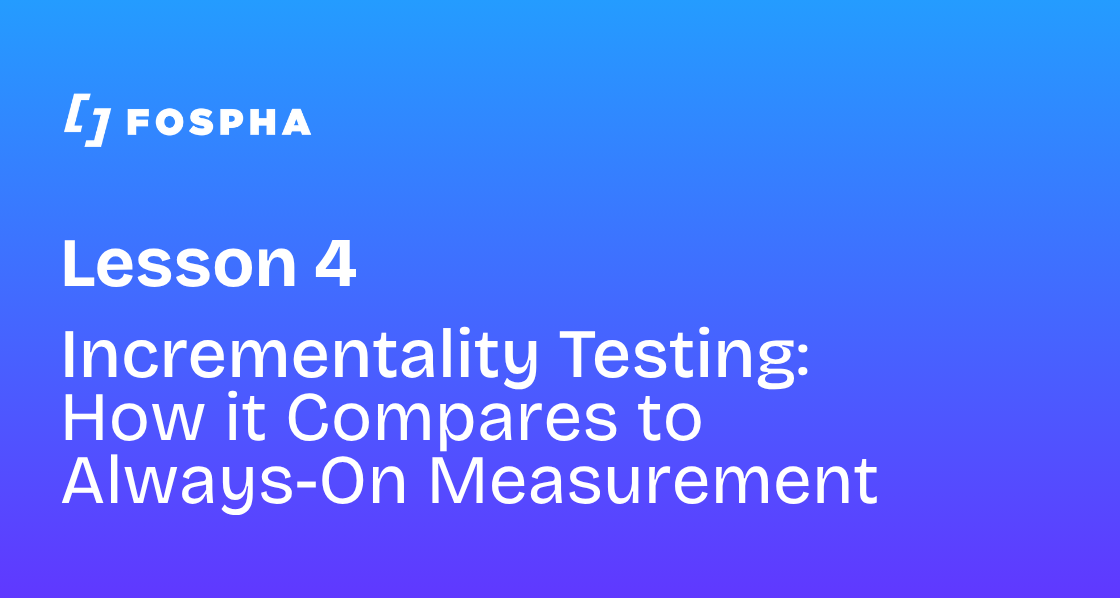Glossary: Key Terms to Know
Welcome to Measurement 101! Here is a short guide to all the key terms and concepts to familiarize yourself with as you work your way through all the content.

Media Mix Models/Modeling (MMM)
A statistical approach used to estimate how different marketing and non-marketing factors contribute to business outcomes like sales, conversions, or revenue. MMMs analyse historical, aggregated data (e.g., weekly or daily spend, impressions, revenue) to quantify how much each channel or driver influenced performance — controlling for external factors such as seasonality, promotions, and macroeconomic trends.
Traditional MMM
A legacy form of MMM typically refreshed quarterly or annually. These models are based on large historical datasets and linear regression methods. They provide valuable strategic insight but are slow to update and less suited for fast-changing digital environments where marketers optimise frequently.
Bayesian MMM
A modern evolution of MMM that applies Bayesian statistics. Instead of producing a single fixed estimate, Bayesian MMMs generate a distribution of possible outcomes, quantifying uncertainty and allowing faster updates as new data arrives. They can also incorporate external evidence — like results from experiments — to strengthen estimates where data is sparse.
Bayesian Modeling
A statistical framework that combines prior beliefs (credible existing knowledge about how a system behaves) with new data to update what we believe is true. In measurement, this means starting from an informed view (e.g., a typical ROI range for Meta prospecting) and refining it as new data comes in.
Think of it as continuously learning from new evidence rather than starting from scratch each time.
Priors
A key concept in Bayesian modeling. Priors represent existing, evidence-based beliefs about how a variable behaves before new data is analysed. They might come from past models, validated experiments, or industry benchmarks. Priors act as a stabilising influence when data is noisy, limited, or rapidly changing — ensuring early estimates remain realistic while still flexible enough to adapt as new signals appear.
Credible Interval (CrI)
The Bayesian equivalent of a confidence interval. Instead of offering a single “best” number (e.g., ROI = 4), a credible interval gives the range within which the true value is likely to fall — for example, “there’s a 90% probability that ROI lies between 3.2 and 4.8.”
This expresses how confident the model is in its estimates and helps marketers assess both opportunity and risk.
Correlation vs. Causation
Correlation means two things move together (e.g., when ad spend goes up, sales go up), but one doesn’t necessarily cause the other.
Causation means one variable directly influences another (e.g., running an ad causes incremental sales).
Umbrella analogy: More umbrellas and more rain are correlated, but rain causes umbrellas — not the other way around.
Understanding this difference is essential when interpreting MMM results, which infer causality statistically rather than experimentally.
Incrementality Test (or Randomized Controlled Trial, RCT)
An experimental technique that isolates true causal impact. It randomly splits audiences into a test group (exposed to marketing) and a control group (not exposed) to measure lift — the difference directly caused by advertising. These experiments provide ground truth data that can be used to calibrate or inform priors in a Bayesian MMM.
Observational Data
Data collected passively from real-world behaviour (e.g., spend logs, site visits, revenue) rather than experimental manipulation. MMMs rely on observational data, which makes their causal conclusions dependent on careful model design — such as controlling for confounding factors, time lags, and seasonality.
Calibration
The process of aligning a model’s statistical estimates with validated external evidence — such as lift test results or benchmark studies — to improve accuracy and trust. In Bayesian MMMs, calibration often happens by incorporating experimental outcomes into the model as priors, bridging the gap between correlation-based inference and proven causality.








